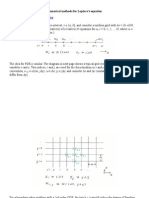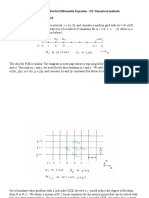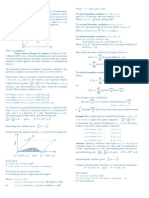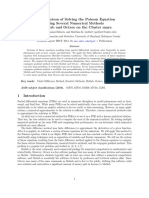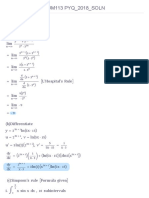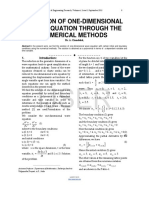0% found this document useful (0 votes)
17 views41 pagesUnit V Maths
The document discusses the classification of second-order linear partial differential equations (PDEs) into elliptic, parabolic, and hyperbolic types based on the discriminant B - 4AC. It also covers methods for solving elliptic equations, such as Liebmann’s iteration process and Poisson’s equation, along with examples illustrating these concepts. Additionally, it introduces parabolic equations and the Bender-Schmidt method for solving the one-dimensional heat equation.
Uploaded by
AbhinavvCopyright
© © All Rights Reserved
We take content rights seriously. If you suspect this is your content, claim it here.
Available Formats
Download as PDF, TXT or read online on Scribd
0% found this document useful (0 votes)
17 views41 pagesUnit V Maths
The document discusses the classification of second-order linear partial differential equations (PDEs) into elliptic, parabolic, and hyperbolic types based on the discriminant B - 4AC. It also covers methods for solving elliptic equations, such as Liebmann’s iteration process and Poisson’s equation, along with examples illustrating these concepts. Additionally, it introduces parabolic equations and the Bender-Schmidt method for solving the one-dimensional heat equation.
Uploaded by
AbhinavvCopyright
© © All Rights Reserved
We take content rights seriously. If you suspect this is your content, claim it here.
Available Formats
Download as PDF, TXT or read online on Scribd
/ 41






